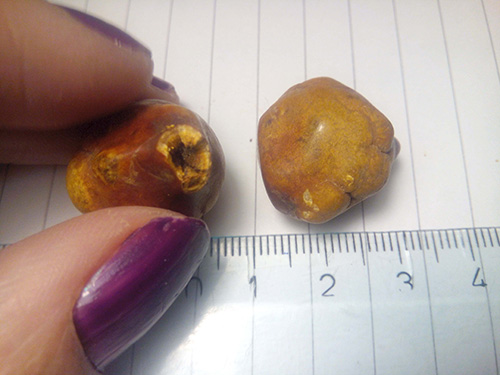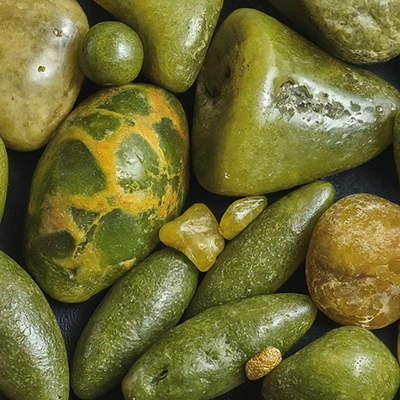Contents
Gallstones are like the annoying party crashers that won’t leave the exclusive club that is your gallbladder. A gallstones size chart gives you a better idea about these microbes that are the party poopers of your digestive system, and they may be anything from tiny to “Are you kidding me?” in size. They invade without permission and create more chaos than a reality show.
- GET 24/7 KIDNEY & GALLBLADDER SUPPORT: Stone Breaker is formulated to help detox, flush and cleanse the impurities and acidic buildup that can impact the kidney, gallbladder and urinary system
In the digestive tract, gallstones are the little revolutionaries. These solid masses result from a collaboration between cholesterol, bilirubin, and other substances. The “Bilestones” would be the name of their band if they were one. These gallstone thugs may cause major havoc by obstructing your gallbladder or bile ducts, leaving you in excruciating agony and desperate to expel them from your body’s club as soon as possible. So next time your stomach rumbles, remember that it may be those pesky gallstones making a scene.
The sizes of these pebbles can vary widely, from sand grains to golf balls. Knowing their size will help you gauge their potential impact and any symptoms you could have.
The Gallstones Size Chart
Let’s take a closer look at the gallstone size chart, which ranks stones from smallest to biggest:
Grain Size Gallstones

- Description: The tiniest form of gallstones often go unnoticed due to their size, resembling grains of sand.
- Size: Less than 2 mm
- Implications: Often asymptomatic, they might not require treatment unless they number in the thousands, leading to “sand” in the gallbladder.
Pea Size Gallstones
- Description: As the name suggests, these stones are roughly the size of a pea.
- Size: 2 mm to 5 mm
- Implications: Though larger than grain-sized stones, they may still pass without causing noticeable symptoms.
Marble Size Gallstones
- Description: Compared to small children’s marbles, these stones present a greater risk of causing gallbladder attacks.
- Size: 6 mm to 10 mm
- Implications: These stones are more likely to get lodged in the bile duct, potentially causing pain and other complications.
Large Marble Size Gallstones
- Description: Resembling the more giant marbles in games, their increasing size makes them more likely to cause discomfort.
- Size: 11 mm to 15 mm
- Implications: Similar to the marble-sized stones, there’s a significant risk associated with potential bile duct obstructions.
Golf Ball Size Gallstones
- Description: These are substantial in size, potentially causing more severe symptoms and complications.
- Size: 16 mm to 45 mm
- Implications: Their size often means they can’t easily pass through the bile duct. Surgical interventions might be required.
Oversized Gallstones
- Description: These rare but significant stones can even fill the entire gallbladder.
- Size: Over 45 mm
- Implications: Due to their size, they are often associated with acute cholecystitis (gallbladder inflammation) and might necessitate surgery.
Gallstones Size Chart: The Bigger Picture

The size of gallstones is just one factor in determining their likelihood of causing problems. Essential elements determining the course of treatment include the kind of gallstone present (cholesterol or pigment), the quantity of stones present, and the symptoms they cause.
It’s also important to remember that some people might have no gallstone symptoms. In contrast, others can be discomforted by even the most petite stones. Therefore, if gallstones or similar symptoms are suspected, a visit to the doctor is necessary for assessment and assistance.
Composition of Gallstones
Cholesterol Stones: About 80% of all gallstones are of this kind, making it the most frequent type. Undissolved cholesterol gives them their characteristic yellow-green hue.
Pigment Stones: These gallstones are smaller and darker because bilirubin is the primary component. You can further divide them into:
- Black stones: Cirrhosis, biliary tract infections, and several inherited blood abnormalities are common triggers.
- Brown stones originate in the bile ducts, not the gallbladder, and are caused by bile duct infections.
Causes of Gallstones
Gallstones can be caused by several different things, such as:

- Excessive cholesterol in bile: Stones can occur if the liver emits more cholesterol than the bile can break down.
- Excessive bilirubin in bile: Pigment stones can occur when the bilirubin level in the body rises due to diseases, including cirrhosis, certain infections, and blood problems.
- Incomplete gallbladder emptying: Overly concentrated bile is one factor in stone development, which can occur if the gallbladder isn’t emptied regularly.
Symptoms of Gallstones
Many people with gallstones feel no symptoms (are asymptomatic); for those who do, it can cause severe discomfort:
- Pain is felt most frequently in the upper right abdomen; it might persist for hours and spread to the back and shoulders.
- Nausea or vomiting: Accompany the discomfort often.
- Constipation, heartburn, and other gastrointestinal distress.
- Jaundice: Skin and eye yellowing, typically caused by a stone in the common bile duct.
Treatment Options
Gallstones’ severity, variety, and symptoms inform how they are treated:
- Observation: Many medical professionals advocate a “wait and see” strategy for patients with asymptomatic gallstones.
- Medication: Cholesterol stones can occasionally be dissolved with oral drugs, although the process might take months to years.
- Lithotripsy: Treatment in which shock waves shatter stones into fragments small enough to be ousted from the body via the bile ducts.
- Surgery: Cholecystectomy, or gallbladder removal, is the most frequent therapy and is typically performed laparoscopically.
Knowing the size of a gallstone isn’t the only thing you need to know. Understanding their makeup, what causes and symptoms they produce, and how to cure them gives you a complete picture of these prevalent digestive problems. You should always see a doctor if you want a good diagnosis and treatment plan.
- KIDNEY SUPPORT. Planetary Herbals offers you Stone Free, a unique blend of turmeric root, coin-leaf desmodium, lysimachia, dandelion root extract, ginger root, lemon balm leaf, marshmallow root, parsley root, dandelion root, and licorice root. These herbs have been used historically to support the kidneys, liver and gallbladder and promote healthy organ function.
DISCLAIMER: All content on this website is presented solely for educational and informational objectives. Do not rely on the information provided as a replacement for advice, diagnosis, or treatment from a qualified medical expert. If you are pregnant, nursing, or have any preexisting medical concerns, talk to your doctor before using any herbal or natural medicines.
References
- Medical News Today: Gallstone Sizes and Shapes : https://www.medicalnewstoday.com/articles/gallstone-sizes-and-shapes [gallstones size chart]
- Matthew Lublin, MD, FACS : https://www.drmatthewlublin.com/blog/what-does-the-size-of-your-gallstone-mean
- Vinmec: What size gallstones need surgery? : https://www.vinmec.com/en/gastroenterology-hepatobiliary/health-news/what-size-gallstones-need-surgery/
- Dr. Rajasekhar Reddy : https://drrajasekhargastro.com/blog/what-does-the-size-of-your-gallstone-mean.php
- Mangal Prabhu Hospital: What Size Of Gallbladder Stones Need Surgery? : https://mangalprabhu.com/what-size-of-gallbladder-stones-need-surgery/
- Reputable Medical Websites: – https://www.mayoclinic.org/
Last update on 2025-05-09 / Affiliate links / Images from Amazon Product Advertising API


